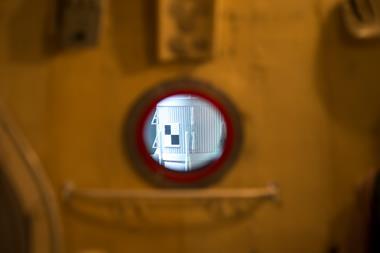A new light-driven process converts the industrial solvent tetrachloroethylene into useful organic chemical building blocks. The approach could enable a simple, inexpensive, safe and environmentally friendly way to upcycle waste solvent into carbonate esters and chloroform.
Tetrachloroethylene, commonly known as perc, is widely used as a metal degreaser and for dry-cleaning fabrics. However, its waste is considered hazardous and is usually disposed of by incineration, which releases carbon dioxide and hydrochloric acid into the atmosphere.
Now, Akihiko Tsuda and his colleagues at Kobe University, Japan, have partnered with materials manufacturer AGC to develop the first simultaneous synthesis of carbonate esters and chloroform from perc in a reaction that is triggered with UV light. Carbonate esters are valuable compounds used as solvents in some lithium-ion batteries and as carbonyl sources in organic synthesis. Meanwhile, chloroform is used as a solvent and as a precursor for refrigerant compounds.
‘Because perc is nonflammable and stable enough to be used as a solvent, its use as a raw material for organic synthesis has received little attention,’ says Tsuda. He explains that perc’s stability means it would usually require a lot of energy or highly reactive reagents to convert. ‘Our photochemical reaction enables its conversion to carbonate esters and chloroform [using] light alone … making the reaction safer and more convenient, with lower energy and chemical consumptions.’
Tsuda and his team developed the new approach by building on a known but small-scale reaction in which perc undergoes photochemical oxidation to form highly reactive trichloroacetyl chloride and a minor amount of phosgene. Until now, this reaction hadn’t been fully explored for its potential application in organic synthesis, says Tsuda. By generating the trichloroacetyl chloride and phosgene in situ and then reacting them further, the team’s approach avoids any direct handling of these dangerous chemicals.
The researchers carried out one-pot experiments that combined perc with an alcohol, such as methanol or etheylene glycol, and an organic base. Mixtures were then bubbled with oxygen and illuminated with short-wave UV light from a mercury lamp. The trichloroacetyl chloride and phosgene, formed via the photochemical oxidation of perc, underwent base-catalysed condensation reactions with the alcohol to ultimately produce acyclic and cyclic alkyl carbonate esters and chloroform gas.
‘Photochemical conversion of perc to trichloroacetyl chloride is generally prevented by alcohol. However, we found that even in their mixed solutions, the reaction proceeded by irradiating light on the gas phase rather than on the sample solution,’ explains Tsuda. ‘This increased the efficiency of the radical chain reaction of perc to trichloroacetyl chloride and enabled synthesis on a practical scale.’

‘This published one-pot process fits ideally to the endeavours of the chemical industry for reaching a new level of sustainability in recycling and manufacturing bulk chemicals,’ says Thomas Rehm who investigates synthetic organic photochemistry at the Fraunhofer Institute for Microengineering and Microsystems, in Mainz, Germany.
‘Nevertheless, as is usual for academic research, a straightforward transfer to an industrial scale process needs much more research … for increasing the yield, and also for maintaining high-level safety during production and downstream processing of such toxic and volatile intermediates like trichloroacetyl chloride and phosgene,’ he adds.
Tsuda says his group are now aiming to overcome the hurdles of applying the new process in industrial settings. ‘We are currently working with AGC on scale-up synthesis experiments for practical application, which should expand from the 100-gram scale to the kilogram and ton scales,’ he says.
References
I Higashimura et al, J. Org. Chem. 2024, DOI: 10.1021/acs.joc.3c02588












No comments yet